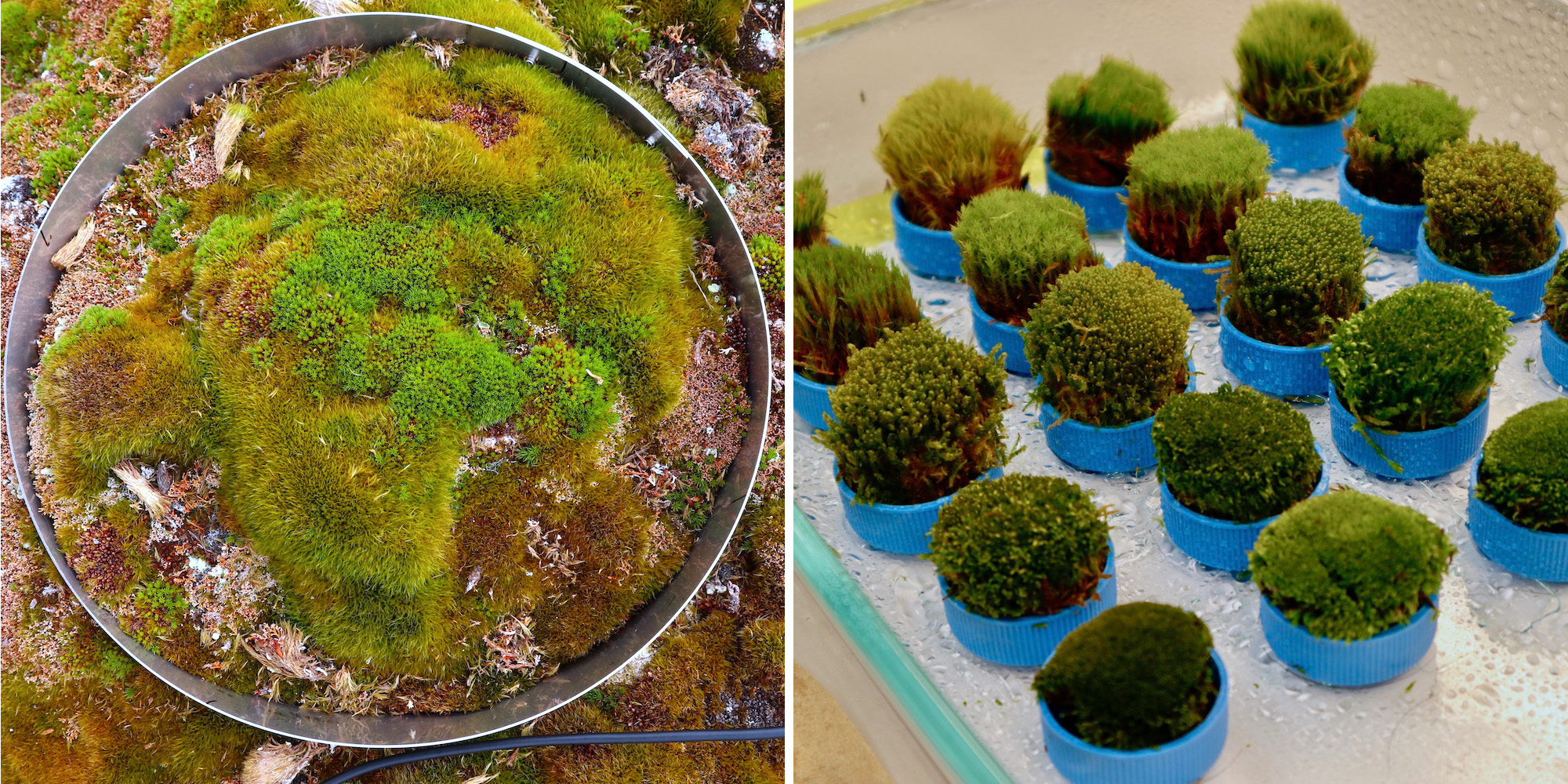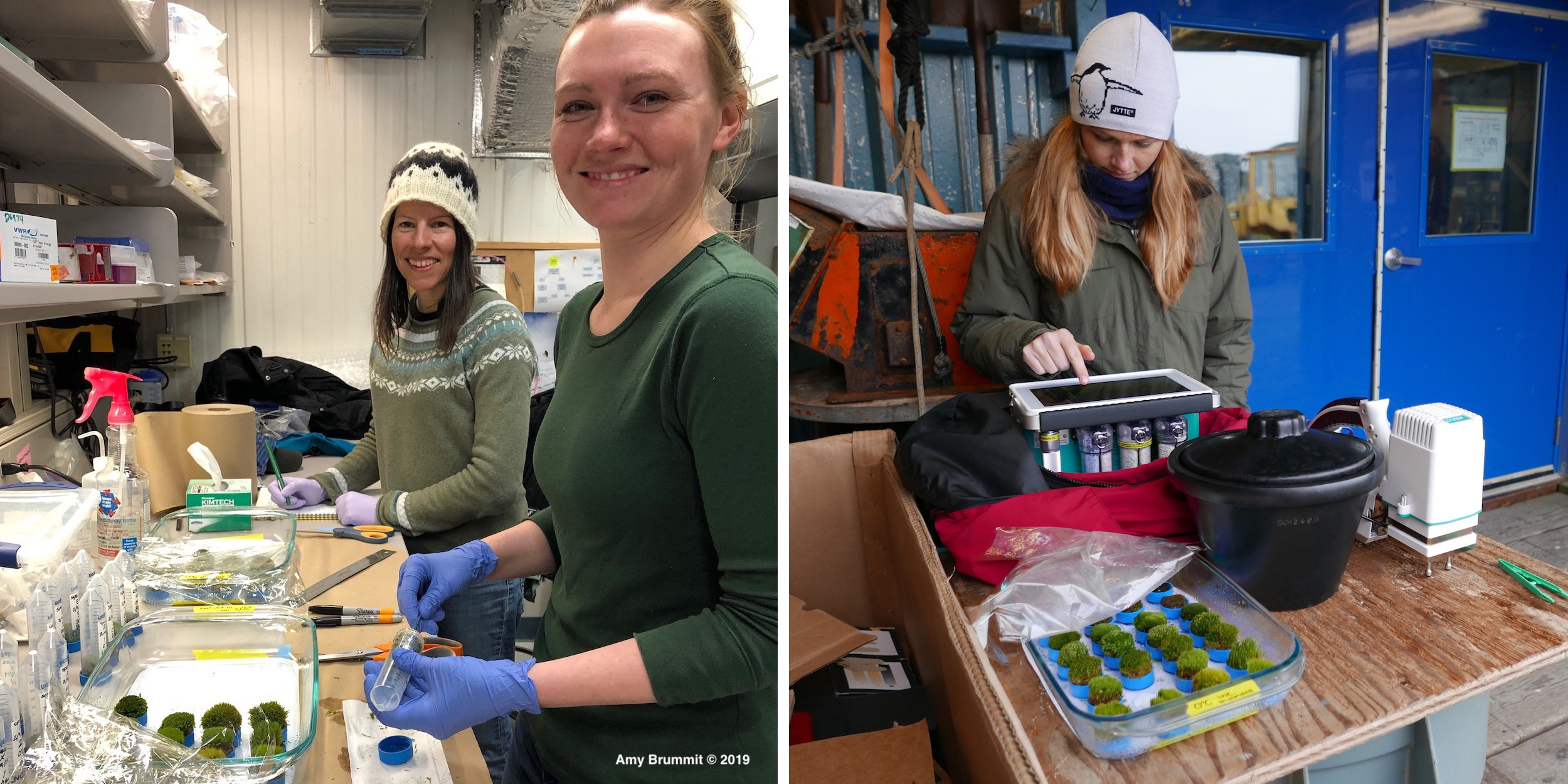Of moss and more moss:
Things are never easy! In the field we are dealing with communities of plants - not individual species. So, how to interpret the carbon fluxes from the field to the different plants? By collecting samples containing only one species of plants and measure carbon fluxes back in the lab. We collected moss “plugs” in falcon tubes, and the moss fits right inside the falcon tube’s cap (right photo below).

Kelly is removing the moss inside the falcon tube and placing them into the cap (see left photo below). Because we are interested in the physiology of the moss and to get an idea of the maximum photosynthetic rate, we subject moss to different levels of light by placing them in a chamber that has a dimmable light. We start at high light and ramp it in several steps to low light. As the light gets dimmer, plants reduce their photosynthetic rate - this creates a light-response graph. There is much useful information we can extract from this grah.
Kelly measured light-response curves outside where temperatures are near 0o C, and again inside where temperatures are about 20o C. Because our study focuses on warming effects on plants, we thus want to know if mosses are temperature-sensitive in terms of their photosynthetic performance.
